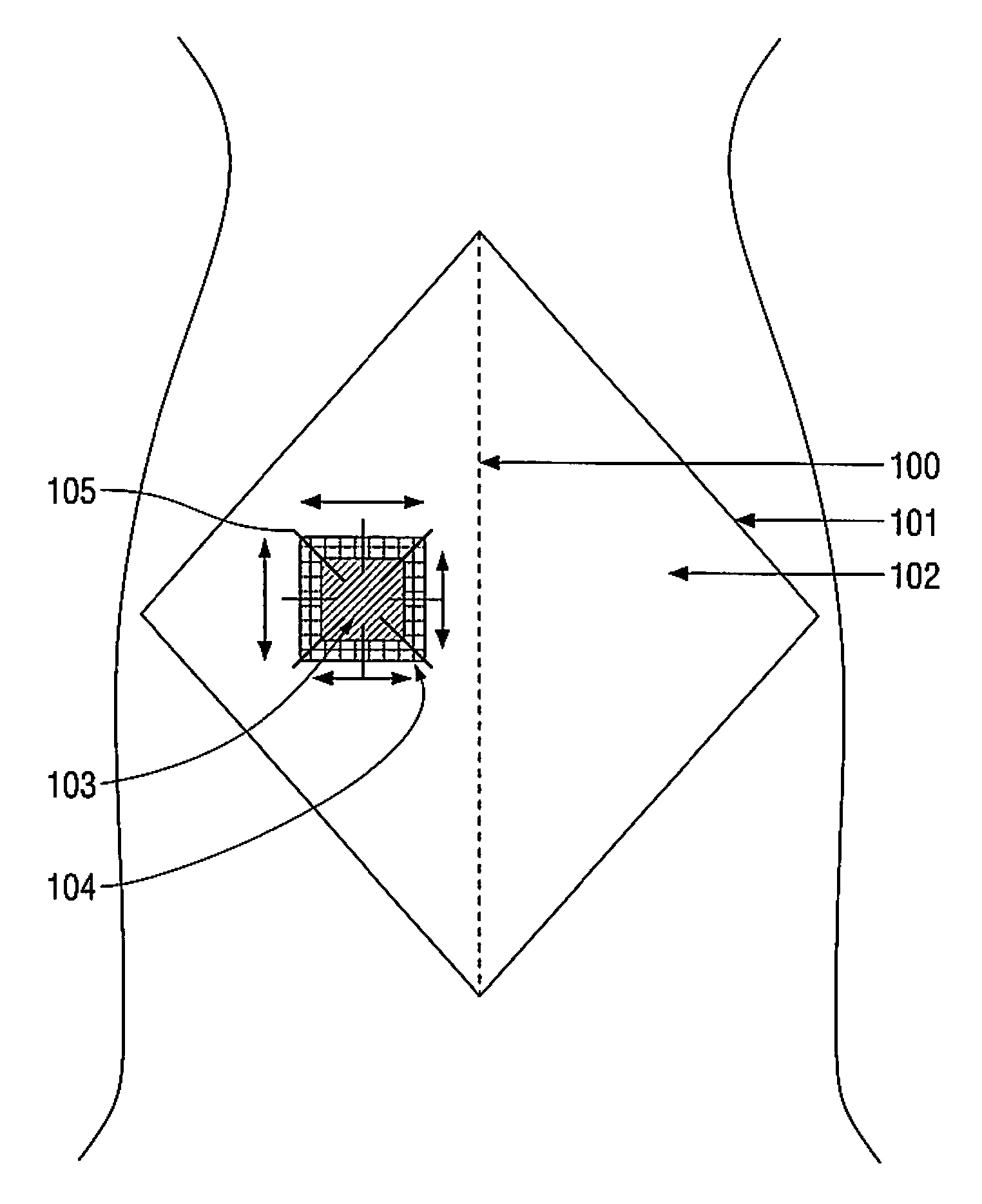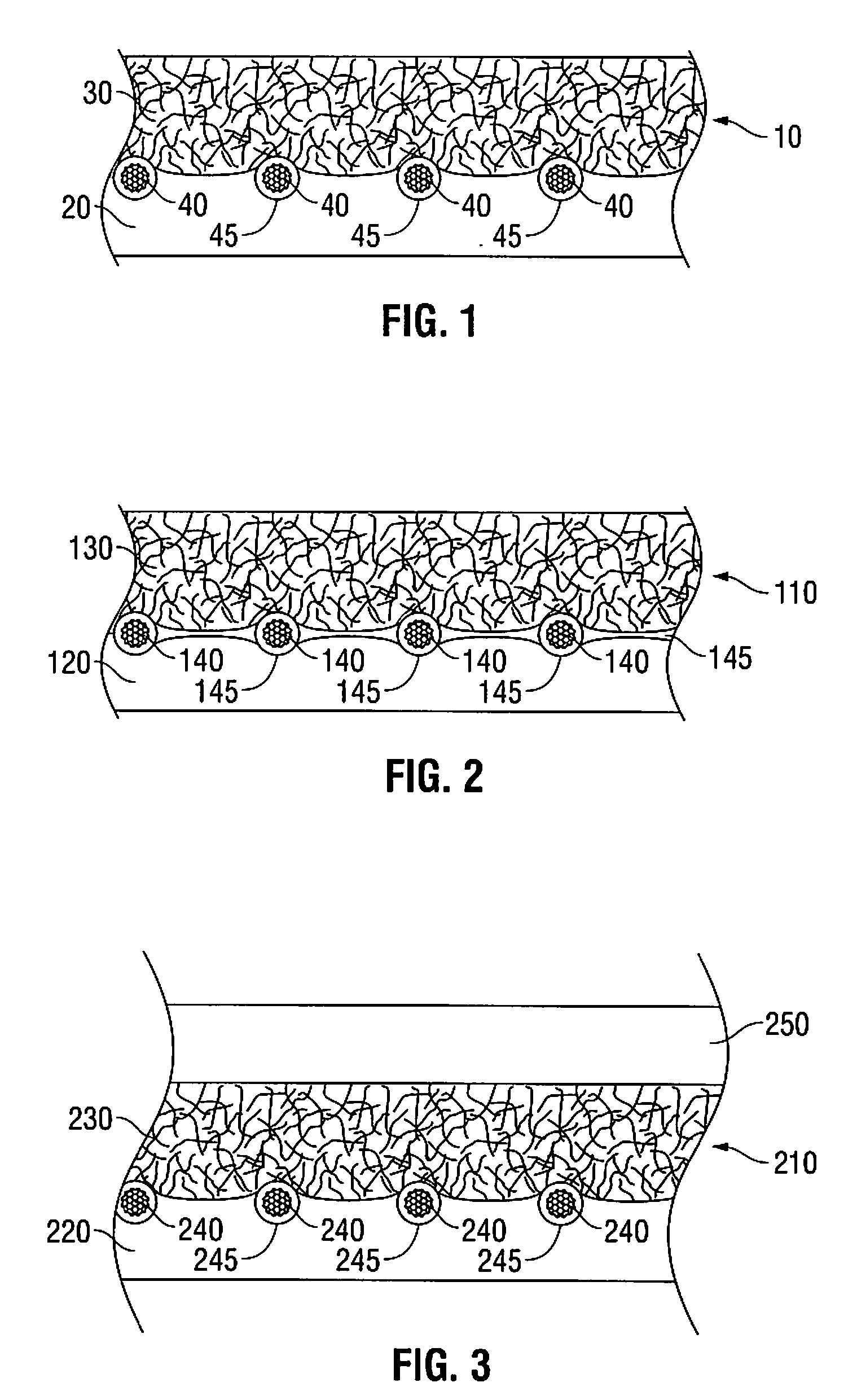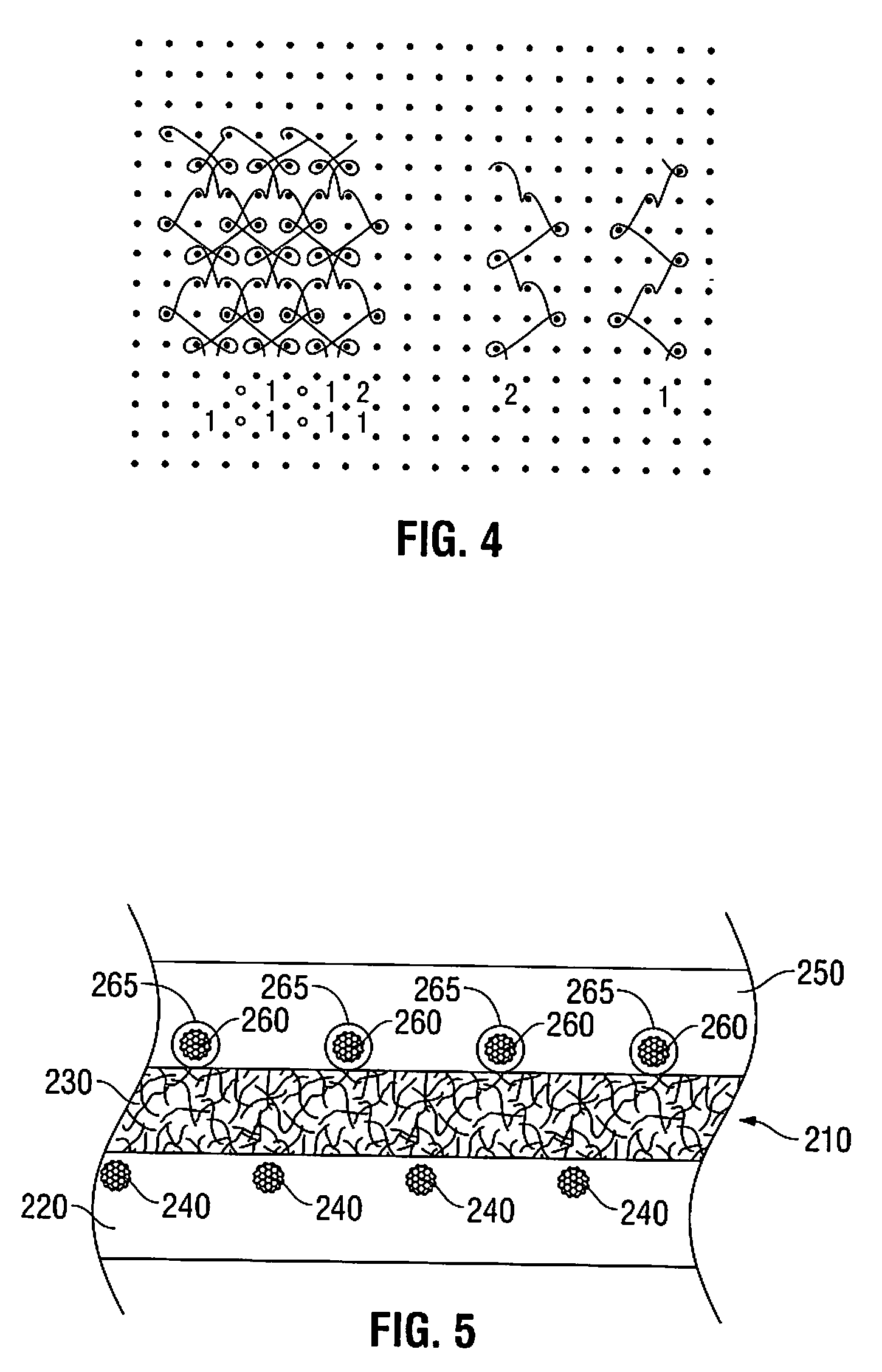Biosynthetic implant for soft tissue repair
a biosynthetic implant and soft tissue technology, applied in the field of biosynthetic implants for soft tissue repair, can solve the problems of reducing the strength of such implants, reducing the service life of the implants, so as to reduce the inflammation reaction and infection risk, and the ability to withstand high loads.
- Summary
- Abstract
- Description
- Claims
- Application Information
AI Technical Summary
Benefits of technology
Problems solved by technology
Method used
Image
Examples
example 1
1°) Obtention of Purified Fibers of Collagen
[0145]The collagen used is porcine collagen type I, extracted from porcine dermis by solubilization at acidic pH or by digestion with pepsin, and purified by saline precipitations according to known techniques (see for example FR-A-2 715 309). Dry collagen fibers obtained by precipitation of an acid solution of such a collagen by adding NaCl, and then washing and drying of the precipitate obtained with aqueous solutions of acetone having an increasing concentration of 80% to 100%, are used in the following steps of the present example.
2°) Preparation of Porous Layer
[0146]a) Preparation of Glutaraldehyde-Crosslinked Collagen
[0147]Purified fibers of collagen obtained in 1°) are solubilized in water at a final concentration of 1% m / v. The solution of collagen at 1% m / v is then neutralized by adding sodium phosphate at a final concentration of 20 mM. The final pH of the suspension was measured at between 6.5 and 7.5. Glutaraldehyde (aqueous so...
example 2
[0173]The product of Example 1 is further processed by adding a second non-porous layer on the other side. This second non-porous layer includes a second reinforcement member.
[0174]The collagen solution destined to form the second non-porous layer, as described in above Example 1, part 3°), is poured in a thin layer on a framed, flat hydrophobic support such as PVC or polystyrene, at an ambient temperature close to 22° C. The amount of solution used is 0.133 grams of solution per square centimeter of support. The collagen layer is let for about 15 min under a laminar flow hood. Then, a second collagen coated reinforcement member is pressed in the partially gelled collagen layer. Finally, the porous layer of the final product of Example 1 is laid on the partially gelled, second non-porous layer, in which the second reinforcement member is embedded.
[0175]The composite material is then dehydrated in a drying cabinet at 20° C. and 40% humidity with a horizontal flow of filtered air at a...
example 3
1°) Preparation of Porous Layer
[0177]A composition of a collagen / chitosan mixture was prepared by mixing an acidic solution of oxidized collagen and an acidic solution of chitosan in different proportions with a final polymer concentration of 1% (w / w).
[0178]a) Oxidized Collagen
[0179]Oxidized collagen was obtained as described in the porous layer description of the Example 1, part 2°)b). A 2% w / v solution of oxidized collagen was obtained from the collagen paste, at ambient temperature.
[0180]b) Chitosan
[0181]The chitosan was solubilized in deionized water with a stoechiometric amount of hydrochloric acid with a polymer concentration of 3% (w / w). The pH of the chitosan solution was about 5, but the pH could have been adjusted to 3 to have better control of the crosslink kinetic between the oxidized collagen and chitosan.
[0182]c) Freeze Dried Composite
[0183]Several mixtures of various blends of oxidized collagen and chitosan as well as native collagen and chitosan (approximately 180 g)...
PUM
| Property | Measurement | Unit |
|---|---|---|
| Thickness | aaaaa | aaaaa |
| Thickness | aaaaa | aaaaa |
| Mass | aaaaa | aaaaa |
Abstract
Description
Claims
Application Information
 Login to View More
Login to View More - R&D
- Intellectual Property
- Life Sciences
- Materials
- Tech Scout
- Unparalleled Data Quality
- Higher Quality Content
- 60% Fewer Hallucinations
Browse by: Latest US Patents, China's latest patents, Technical Efficacy Thesaurus, Application Domain, Technology Topic, Popular Technical Reports.
© 2025 PatSnap. All rights reserved.Legal|Privacy policy|Modern Slavery Act Transparency Statement|Sitemap|About US| Contact US: help@patsnap.com



